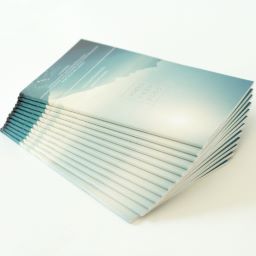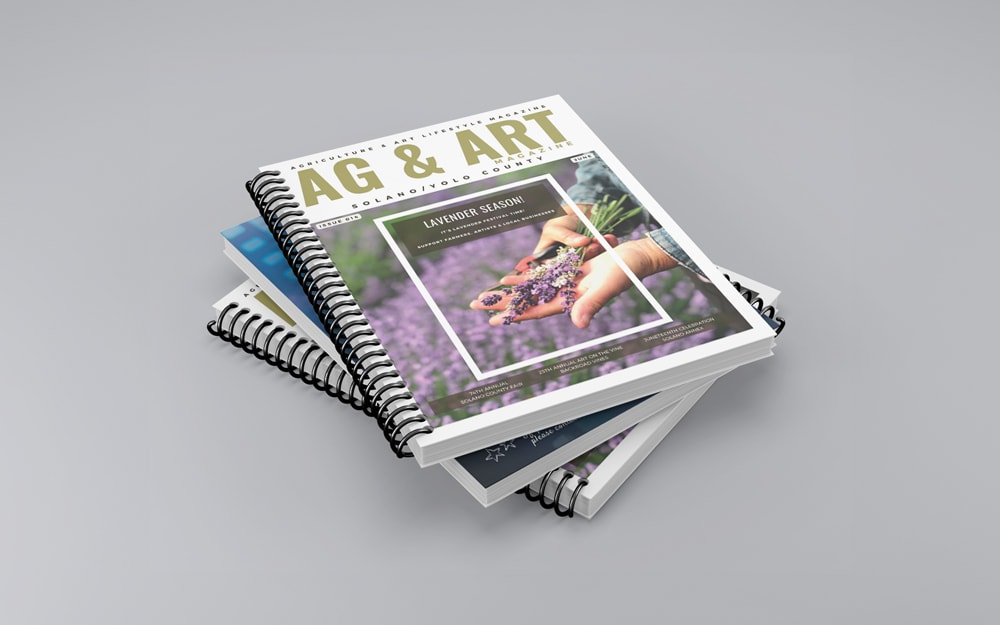How to Use Booklet Printing to Boost Customer Engagement in 2025
How to Use Booklet Printing to Boost Customer Engagement in 2025
Blog Article
The Necessary Overview to Comprehending Booklet Printing Options and Techniques
The process of pamphlet printing includes multiple factors to consider that can substantially influence the end product. From selecting the ideal style and size to understanding the subtleties of binding techniques, each choice plays a necessary duty. Furthermore, elements such as paper stock and printing strategies more affect the effectiveness of the pamphlet. As one navigates these options, it becomes important to grasp just how they interconnect and what that means for the total end result.
Comprehending Pamphlet Sizes and formats
When taking into consideration booklet printing, recognizing the different layouts and sizes offered is essential for achieving the desired discussion. Booklets can be generated in various layouts, including saddle-stitched, spiral-bound, and perfect-bound, each offering unique advantages. Typical dimensions range from typical letter (8.5 x 11 inches) to smaller choices like A5 (5.8 x 8.3 inches), permitting versatility based upon content and target audience.Selecting the proper dimension can influence both the design and viewers engagement. Bigger dimensions might fit aesthetically driven web content, while smaller styles might be more portable and straightforward. Furthermore, the variety of web pages affects the option of binding approach, as thicker pamphlets may require stronger bindings. Eventually, understanding these aspects enables for an extra customized approach, guaranteeing that the last item straightens with the desired message and aesthetic, enhancing the general efficiency of the interaction.
Picking the Right Paper Supply

Binding Approaches: Factors To Consider and options
When it concerns binding techniques for pamphlets, several options are offered, each with distinct advantages. Saddle stitch binding supplies a cost-efficient remedy for thinner brochures, while excellent binding techniques offer an even more sleek try to find thicker publications. Wire-O binding stands apart for its toughness and convenience of use, making it perfect for papers that need adaptability.
Saddle Stitch Binding
Saddle stitch binding supplies a affordable and useful option for setting up brochures, making it a prominent option amongst publishers and services. This binding technique involves folding sheets of paper in half and stapling them along the fold line, creating a cool and well organized look. Usually appropriate for brochures with a lower web page matter, saddle sewing is optimal for magazines, brochures, and instructional products. The simpleness of this method allows for fast manufacturing and is commonly favored for marketing items or brief runs. However, it is vital to note that saddle stitch binding might not appropriate for thicker booklets, as the back might not hold up under increased weight. In general, it continues to be a trusted choice for many printing tasks.
Perfect Binding Methods
Perfect binding is a widely utilized technique that supplies a polished and specialist surface to pamphlets and publications. This approach involves gluing the web pages with each other at the back making use of a solid adhesive, permitting a tidy side and the ability to hold a bigger number of web pages contrasted to saddle sewing. Perfect binding is especially suitable for thicker brochures, such as brochures and yearly records, where a sturdy, level spine is desired. Additionally, it offers the alternative for a printed cover that can be made to enhance aesthetic allure. Considerations such as web page matter, paper weight, and the planned usage of the pamphlet ought to be taken right into account, as they can influence resilience and general top quality.
Wire-O Binding Choices
Wire-O binding, recognized for its durability and adaptability, uses a superb alternative for booklets that need simple web page transforming and a specialist look. This binding method uses a series of metal loopholes that hold web pages securely, allowing them to lie flat when open. It is specifically suitable for manuals, presentations, and brochures due to its durable nature. Wire-O binding is offered in different colors and sizes, suiting different page counts and densities. In addition, it allows the addition of tabs and covers, boosting the pamphlet's general aesthetic. Considerations for Wire-O binding consist of the selection of cord shade, the size of the loops, and the level of modification preferred, every one of which can exceptionally influence the last item's look and capability.
Digital vs. Offset Printing: Which Is Best for You?
When selecting a printing technique for brochures, understanding the distinctions between digital and offset printing is vital. Digital printing utilizes modern-day innovation to create high-grade prints quickly and cost effectively, making it suitable for short runs or tasks needing quick turn-around times. It enables customization, giving the capability to publish on-demand with marginal waste.In contrast, counter printing is a standard method that stands out in creating large amounts with consistent high quality. It involves transferring ink from a plate to a rubber covering, then to the paper, which leads to accurate information and vibrant shades. Balance out printing usually needs longer configuration times and is a lot more affordable for bigger volumes.Ultimately, the selection in between digital and balance out printing depends on task requirements, budget plan, Bonuses and preferred amount. For tiny, time-sensitive jobs, electronic might be the most effective option, while countered might be more suitable for bigger, high-quality productions.

Creating Your Pamphlet: Tips and Finest Practices
When making a pamphlet, mindful attention to design, font option, and shade usage can greatly boost its efficiency. A well-structured design overviews the visitor's eye, while ideal fonts assure readability and share the wanted tone. In addition, efficient usage of shade can stimulate feelings and highlight key details, making the total layout more impactful.
Picking the Right Design
How can one properly select the best layout for a brochure? It is vital to evaluate the brochure's purpose and target audience. A tidy, organized format enhances readability and involvement. Using a grid system can assist in lining up components regularly, developing an expert look. Furthermore, including visual power structure through differing sizes and placements of photos and text can assist the reader's eye and highlight vital information. It is additionally vital to leave adequate white room, which avoids congestion and permits for better emphasis. Examining different layouts with mock-ups can supply understanding right into how the design does in real-world circumstances, making certain that the final product meets both practical and visual needs. Useful Selecting Ideal Typefaces
An appropriate font can significantly improve the general style of a pamphlet, enhancing the format and enhancing the web content's message. The option of typefaces need to consider readability, especially for body text, as it assures the information comes to all readers. Sans-serif font styles are often liked for digital styles, while serif typefaces can lend a standard feeling in published materials. It's recommended to limit font choices to two or 3 to keep aesthetic coherence. Additionally, font dimension plays a crucial function; headings ought to be distinct yet not frustrating, while body message ought to be comfortable for analysis. When choosing fonts, alignment with the pamphlet's style and target audience is essential for reliable communication and aesthetic allure.
Efficient Use Shade
Color acts as a powerful device in brochure layout, shaping assumptions and directing visitor feelings. It can evoke sensations of peace, count on, or enjoyment, depending on the shades picked. Designers must consider shade concept concepts, guaranteeing that the picked scheme aligns with the brochure's message and target market. Utilizing warm shades like red and orange can develop necessity, while cooler tones like blue and green foster tranquility.Additionally, contrast plays an important function; corresponding shades can improve readability and aesthetic allure. Uniformity in shade use throughout web pages additionally reinforces you could try here brand name identification and communication. Inevitably, reliable shade execution not just records interest however likewise strengthens the brochure's function, making it a necessary element of effective style.
Completing Touches: Coatings and Special Effects
While many consider the content and layout of a booklet their explanation the most critical components, the ending up touches, such as layers and unique impacts, play a vital role in enhancing its total allure. Coatings can supply protection and resilience, ensuring that the pamphlet stands up to deterioration. Matte finishes offer an innovative, non-reflective surface, while glossy layers can make shades appear even more lively and attractive. Unique effects, like embossing or aluminum foil stamping, include a tactile measurement that can create a memorable impression. These techniques can highlight specific locations, drawing attention to vital info or developing visual interest. In addition, UV finish can offer a high-shine coating that elevates the total look.Together, these finishing touches not just enhance the brochure's aesthetic however also interact professionalism and interest to information, eventually leaving a long-term effect on the viewers.
Cost Factors To Consider for Booklet Printing
Comprehending the numerous cost factors to consider for pamphlet printing is vital for businesses and organizations aiming to enhance their spending plans. Key elements affecting prices include the choice of paper, binding, and ink techniques. Greater top quality materials, such as premium paper or specialized inks, usually raise the overall expense. Furthermore, the size and web page matter of the pamphlet play a substantial role; larger booklets require more resources and time to produce.Another crucial factor to consider is the printing strategy, whether electronic or countered, as each has its very own rates framework and viability for various amounts. Organizations should also factor in design costs, which can differ based upon intricacy and the usage of specialist solutions. Inevitably, delivery and handling charges can include to the overall, particularly for big orders. By assessing these aspects, organizations can make informed choices that straighten with their economic capacities while achieving the desired top quality in their published products.
Often Asked Inquiries
What Are the Environmental Effects of Booklet Printing?
The ecological influences of brochure printing include deforestation from paper manufacturing, carbon exhausts from transportation, and waste generation from discarded products - Booklet Printing. Lasting methods, such as using recycled paper and eco-friendly inks, can mitigate these results
Exactly How Can I Guarantee Shade Precision in My Brochure?
To guarantee shade accuracy in a pamphlet, one must use adjusted screens, employ specialist color profiles, carry out test prints, and pick top notch printing services that supply color matching and proofing options for finest results.
What Is the Regular Turnaround Time for Pamphlet Printing?
The normal turnaround time for brochure printing varies depending upon the complexity and amount - Booklet Printing. Generally, it varies from a couple of days to two weeks, affected by elements such as publishing techniques and ending up requirements
Exist Minimum Order Quantities for Booklet Printing?

Can I Print Brochures in Numerous Languages?
Publishing pamphlets in multiple languages is possible. Numerous printing services provide choices for multilingual or multilingual formats, permitting for efficient communication. Careful planning guarantees that develop elements fit different languages without jeopardizing readability or looks. In addition, variables such as paper supply and printing strategies more affect the efficiency of the brochure. When thinking about brochure printing, comprehending the different formats and sizes available is important for achieving the preferred discussion. When picking a printing method for pamphlets, comprehending the distinctions between electronic and offset printing is necessary. Additionally, the size and page matter of the booklet play a significant function; larger booklets require even more sources and time to produce.Another crucial consideration is the printing technique, whether electronic or balanced out, as each has its own pricing framework and suitability for different amounts. The environmental impacts of pamphlet printing consist of deforestation from paper manufacturing, carbon discharges from transportation, and waste generation from thrown out materials.
Report this page